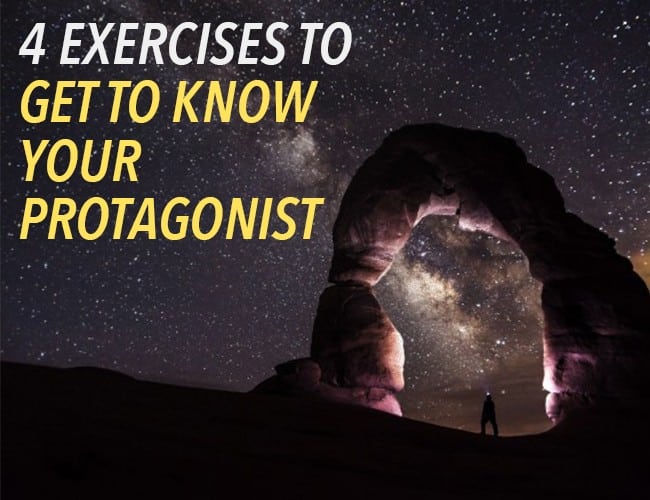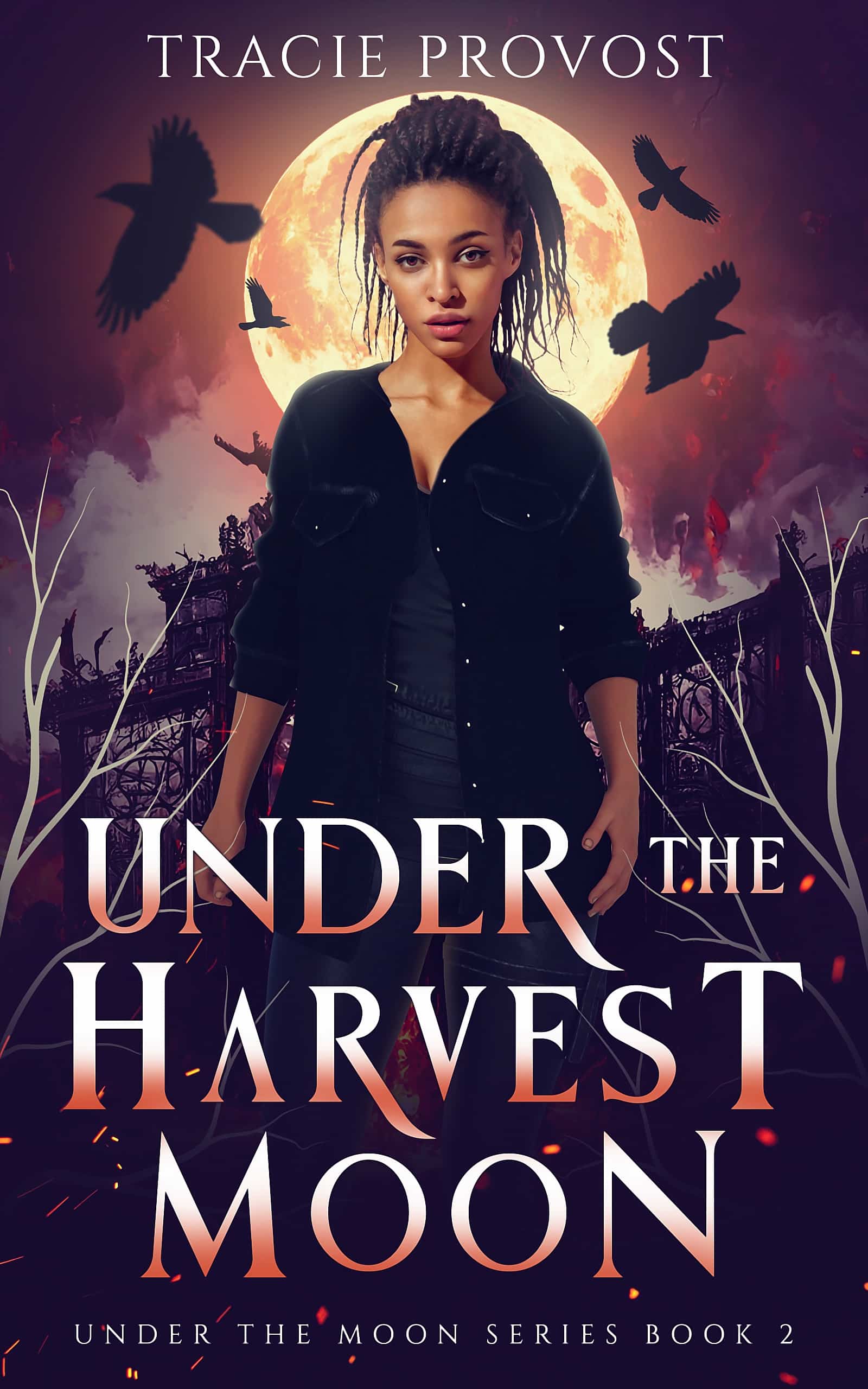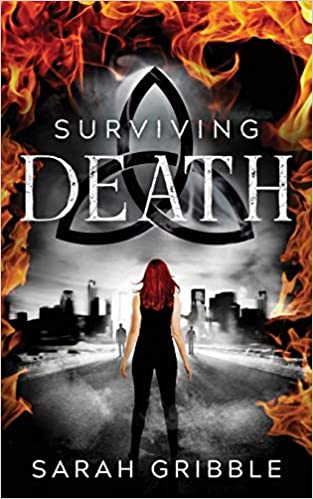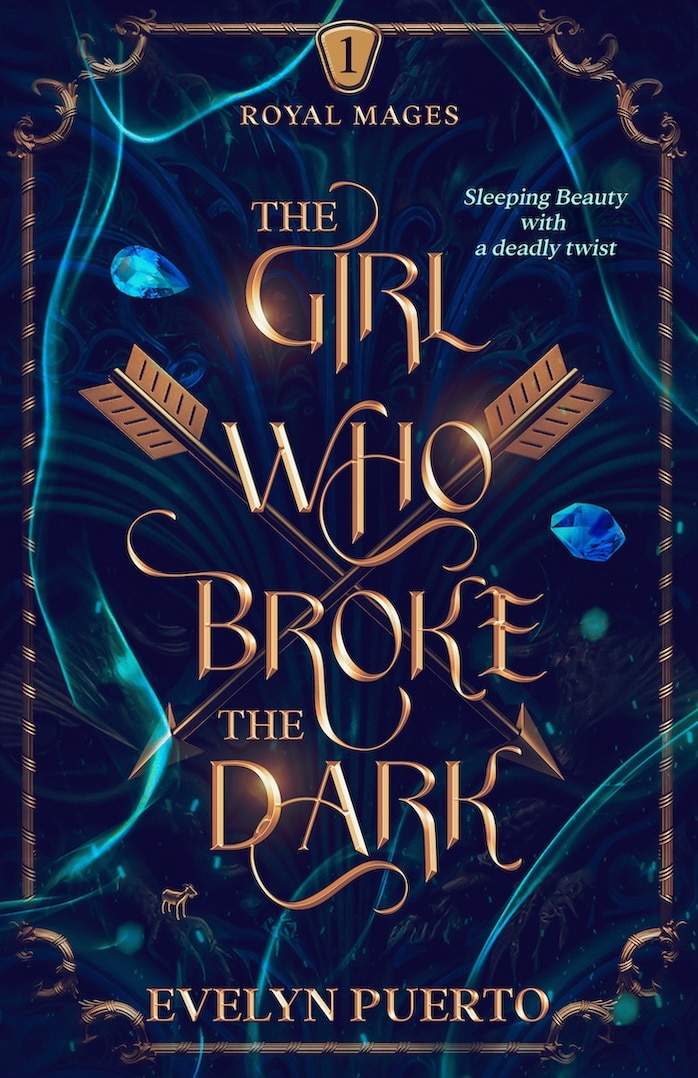Think you know your story's main character? You might not know as much as you think.
A great character is as complex as a living, breathing human being. That means she or he has an extensive galaxy of history, opinions, experiences, and feelings running through her—some of them might even contradict each other.

How to Get to Know Your Protagonist
How do you make sure your characters are multidimensional enough to jump off the page and connect with readers? These creative writing exercises can help you get there.
1. Go through her purse.
Charlaine Harris shared this great character-building writing exercises at last year's Thrillerfest, and it's a trick she uses to get to know her own new characters.
It's a good one. A purse is basically a woman's life in a bag. What they put in their purse—or even whether she carries one or not—says a lot about her.
For male characters who don't carry a purse, think about what's in their briefcase, backpack, or pockets.
2. Take your character out to lunch.
Invite your character out to lunch to get to know him or her better—as you might with a new coworker. Where would they want to go? What kind of food would they order? Is she comfortable with that introductory small talk? How can you tell?
The information the character gives you—from where they're from to what kind of music they like—is character-building gold. But don't stop there. What is her body language like? What does the character avoid talking about or prefer to keep private?
3. Complete a questionnaire.
There are a number of questionnaires out there to help you get to identify what you should know about your characters, and to discover that critical information. Some are even famously used by legendary writers like Proust.
If this method appeals to you, check out a few different approaches and find what works for your process.
4. Let your character shadow you for a day.
Bring your character along with you for a day, and try to look at your experiences through the filter of that character's perspective. Would your character make different choices? How does she feel about your commute, your job, or your friends?
Thinking like a character for a day can expose your character's thoughts and attitudes in a way that can be surprising. To get the most from this exercise, take the time to explore not just what your character feels, but also why she feels that way.
For great characters, dive deep
Character development is not a place to skimp. Well-rounded, multidimensional characters require a great amount of thought and time. Exercises like these can push you to get out of your typical thought patterns and learn even more about your characters.
How do you get to know your characters? Let us know in the comments section.
PRACTICE
Pick one of the character exercises above and take it for a trial run. Write for fifteen minutes your thoughts and discoveries about your character as you go. Share your resulting character sketch in the comments!
By day, Emily Wenstrom, is the editor of short story website wordhaus, author social media coach, and freelance content marketing specialist. By early-early morning, she is E. J. Wenstrom, a sci-fi and fantasy author whose first novel Mud will release in March 2016.



Excellent ideas! I’m going to put them to work.
For my major characters, I fill out a ridiculously long biographical questionnaire I put together – it includes a short interview – and I look for photos of someone whose appearance is a good fit for that character, typically an actor or other public figure, and include them in the character biography. I think about things like what that character’s chess-playing style would be; I’ve played enough to note that you can tell a lot about a person by how they approach the game (Are they cautious and defensive or aggressive and slashing? How long do they think before moving? How do they respond to setbacks? To successes? What mannerisms do they display? and so on.)
Yes, I do that, too. I also use Pinterest to find images of people, places and
objects to help my descriptions. Good post. Thanks.
My eldest son, Alan, asks if he can bring his girlfriend Vanessa, to lunch. I heartily agreed, and he forewarns me about her food likes and dislikes.
“Mom, please be kind to her, and if she refuses something, don’t insist.”
I tell him not to worry.
It’s Sunday, twelve o’clock, when Alan walks down the drive, linking arms with Vanessa. We, that is, my husband, I, my second eldest son, Jamie, and my ten-year-old girl, Beth are sitting on the porch. Alan introduces Vanessa to the family, and after an aperitif and some polite enquiries, we take our seats around the dining table.
I hand out the first course of baked lasagne. Vanessa puts a square inch of pie on her plate, which causes my husband to raise his eyebrows. Alan quickly adds that she eats very little. Meanwhile, by observing her during the meal, I get to know much about her.
She holds her head erect and looks down her nose at the food, the table and the occupants. Pah! I think, perhaps she’s afraid of breaking her neck if she bends her head.
She steals a look at me when I pass a new course around, to see the cutlery I choose, and does likewise.
She smiles sourly at a joke Jamie makes, eats hardly anything, and when Alan hands her the dessert of Trifle Pudding, she says “I don’t really want any, but I’ll take a bit, just to dirty my plate.”
It isn’t difficult to make out the type of person she is.
I want to know if he keeps dating this girl, and more about about her quirks and what made her that way. A stressful dinner party well described. Thank you.
Right now, my MC would have his laptop in his backpack. He’s a doctoral student who is also a teacher’s assistant.
Carrie walked into the her cousin’s apartment as she opened the door—no purse, with her hands stuffed in the pockets of her bomber jacket. It was her way of traveling light, unencumbered and giving the impression of her complete independence.
“Hey, cuz! Ready for lunch?
“Sure, Carrie, but where’s your purse?
“Don’t need it, cuz. You know me. Everything I need is right in the pockets of my jeans—house key, money and ID card. The bare essentials.”
“What about your cell phone?”
“At home. I don’t want to be bothered by calls or texts when I’m out having a meal. Besides, I don’t want to be tracked down when I’m enjoying my leisure time.”
“OK, Carrie, but don’t expect me to carry anything you buy in my purse.”
“No worries, cuz. Let’s just go and enjoy our lunch”
I like it, short, snappy, the way some people talk. No purse, I like that part. Thank you.
Thanks for taking the time to read my post, Elaine. I appreciate it.
Well, I didn’t quite get into what was in the bag, maybe because I don’t know what’s in the bag!
From across the street cobblestone street the whispers started as soon as he stepped onto the narrow sidewalk. He looked across the street at the three women and smiled. The whispering was wasted since he spoke no Quechan and couldn’t have understood them if they were shouting. He turned right and started up the street. He pulled the bag’s leather strap a little higher onto his left shoulder, tightened the knots of the shoestring patch that held the strap together, and settled his right hand on top of the canvas bag as it rested on his right hip.
He knew they were whispering about the bag. He had heard it for months. Sometimes in Quechan, the Mayan language that hid in the Aldeas, the mountain villages that surrounding the city. It was spoken on the streets only by villagers who came to the city to cook, clean, or sell vegetables and trinkets in the market. Sometimes in Spanish, the national language of Honduras. And here in Copan Ruinas, the whispers came in English
and occasionally German or French from tourists or expat cafe owners.
Clare Anne’s Purse: Lipstick Queen: color Frog Prince; keys: house, car. wallet; iPhone, small green journal, 2 pens ,inhaler, hankie, Kindle and allergy pills.
I like the 35 questions, when I have time to ask Clare.
Also, I like the idea of Clare walking through my day with me.
Thanks you for the daily prompts, I am finding them helpful in starting to write.
Excellent post! My MC (Russell) is a guy living in a pretty cutthroat fantasy world, so his essentials are five different bracelets (very important to him), at least three if not four knives, a black pen nearly out of ink, a pair of weighted dice, and a letter to his dead mother. He’d probably think a purse would be pretty sweet (though his boyfriend would tease him endlessly) but he’ll stick with pockets for now 😉
Nice to see another person who writes genre fiction with LGBT+ characters! There isn’t enough of it out there.
This is an excellent post! Definitely one of the things I struggle with in my fiction work is the complex life of my characters. I sometimes forget little details that I write about. I don’t notice these details until I’m revising. I go, “Oh yeah, here’s something I wrote about the person.” I will definitely consider these tips. Thank you!
Great post and great concept! I will share this with my colleagues!
Here is my response to exercise number 2:
I assumed an Antarctican restaurant would be a safe bet for her, and I surmised that, living on a starship, she may not often get to enjoy the cuisine of her homeland. I found such an eatery nearby where she had a hot pot of penguin karjalanpaisti, with some sledging biscuits as dippers and rhubarb sima to aid in swallowing. She commented on the music playing, saying that, whilst it was fine, it was a little too ‘popsy’ for her taste, that she much prefers something classical like Rachmaninov or Jovee.
I had tofu karjalanpaisti and some crusty bread. I thought I’d risk some sima as well, but on her recommendation, I tried some of the traditional raisin type.
Although she is very much a loner, I felt she was patient and genuinely interested in my small talk. As the sima started to get to both of us, she showed her slightly off-colour sense of humour. She could be quite crass at times, albeit quietly so as to show tact and respect for those at nearby tables. She had remarkable control over her voice. Whenever I get like that, I tend to talk a little too loudly, but not Clio.
I asked her about the pretty star sapphire pendant she wore around her neck, as I noticed her almost petting the thick gold chain. I asked her if she had had it long (as the way she was handling it, it seemed to me as if it was new, and she was not yet accustomed to it). She started to clam up a bit then, saying merely that she has actually had it for quite a few years. I could tell I had hit a nerve, so I changed the subject.
I asked her about her variable gravity dancing, and before long she was animatedly swinging her arms around whenever she came out with a beat to explain some aspect of her art. Her whole body hummed with the music I was sure was going through her head and into each and every muscle and sinew. She did actually say that music is more felt than heard, that to hear it is like a kiss near the ear, but to feel it is to be in its embrace. I was astounded at how sweeping were some of her arm movements – and she didn’t spill a single drop of sima.
Despite the fact that altogether we totalled three-and-a-bit bottles of sima and stuffed our faces with karjalanpaisti, she never once lost her poise. I think that’s the one thing that stands out about her beyond all other things.
Her poise. She never loses it.
This was great and I am very intrigued by the story going on here. I’m guessing it’s sci-fi?
Thank you. You are right, it is SF. Clio is a genetically modified 27th century Antarctican ballet-dancing commander of a commercial starship.
Ooh, a tough one. I have 2 stories with a collective 3 protagonists, so I choose #2, from my novel. He’s a straight-lace, no-nonsense, doctor, and I have a few lunch scenes in the book, actually. Those scenes are the ones where the reader would learn the most about him, because he reveals a lot of himself to the girl he’s with.
With her, he’s a tad bit awkward, because he’s never dated before. He is an introvert, and she has to usually coax things out of him. One of the lunches that is cut off by the antagonist is one of the most pivotal scenes in the book, because he defends her when the other guy starts bad-mouthing her.
So in my book, lunches are very interesting!
The bag that goes everywhere. A brown-leather tote. Soft and weathered. Big enough to hold her current writing notebooks and at least three or four pens. But small enough not to be in way. Inside the contents swim freely at the bottom. Change, stray sticks of gum and receipts mix freely with hair clips and multiple tubes of chapstick.
She keeps her tampons tucked neatly out of sight in a side pocket for emergencies. Her wallet, keys and phone are usually on top of the pile, but every once in awhile she has to dive into the bag that doubles as a black hole to find them.
Yep, got the picture! Great. well done.
I like “the bag that goes everywhere” as it seems to represent her life. On the surface neat and tidy but with unfathonable depth. The “black hole” suggests that this person might be full of surprises or have depth of character, or perhaps a dark side. I love the richness and mystery you have created in a few sentences.
It started when she realised that one bag was not enough. Thinking back, it might have been airport security. Before that everything was in her one favourite bag, purse, keys, glasses, tissues, wetwipes a small bag of make-up, another make-up bag to keep her memory sticks, digital recorder and charger together, the mobile phone, a notebook. All neat and tidy. Separating the liquids from the dry toiletries was the first step towards her fall from being an organised profesional woman, to someone whose life was lived from thirty or so plastic carrier backs stuffed haphazardly in the trunk of her car.
Darkness greets me upon waking; a feeling I have yet to become accustomed to. Three months have passed since I was attacked. Two months since the gypsies adopted me into their clan. Since they introduced me to the one thing I have needed my entire life. Beside me lays a companion, the young girl still recovering from her possession two months ago. She was the one who blinded me, unwillingly and helpless in her situation. Terror still grips me when I wake beside her, it makes me feel as I did when the First Death happened. But… when she wakes, her innocence, her precious nature and aura fills the area. She guides me through my day, teaching me what I was neglected in the village. She pushes me to reach past my limits and grasp a new look on reality. My attacker, my friend, the sister of my soul.
I reach into myself, to the source of that terror, and open myself to it. Embrace it. Then open my mind to my bond horse. Aviva syncs in with my mind eagerly, greedily, and fills my mind and being with love and trust. Instinctively, I guide her to the fear and together we face it, acknowledge it, dismiss it; as is our regular morning routine. Each day it diminishes further, just slightly. But enough. I no longer run away, to hide in the woods, or try to relocate my childhood home. Now, now I have learned to embrace my shortcomings, my limits. Now, when I wake, I banish my fear and wake my friend. And with her, face the new day. The new dangers. We train, we learn, and we grow. She knows my fear of her, for she truly is a sister of soul. We bonded such as Aviva and I have. We have no secrets from each other, and our trust is unbreakable. It is only years of abuse on my part that breeds the terror. And today will end that terror. Two months have past and the death of that fear has long been overdue. Today, the day of my birth, shall bring forth a renewed me. Today I shall rise from the ashes of my childhood and embrace the future my ancestors prophesied.
I realize after posting that it doesn’t quite match the prompt, though it does share conflicting emotions I suppose. I apologize if it is wrongly placed 🙁
If i brought my most intriguing character to my realm, he would have absolutely no trust in me. Following me around on an average day to my post-secondary school would be a disaster, and a traumatic experience for him. The act would only bring him anxiety and distrust of everything around him. He is from a world where magic is present instead of technology, so seeing my constant use of mechanical things (i.e. laptop, phone, bus,) would make him feel as though I was an experimentalist from the castle plotting against him with the use of hallucinatory images.
He would be highly reluctant to follow me anywhere and if he somehow did he would yank out his sword and threaten almost every civilian that enters his range of combat. Unfortunately, he wouldn’t talk to me or accept it if i tried to befriend him (which i totally would). Actually, now that I think about it, he might kill me (because my first reaction would be to hug him), depending on what part in the story he’d emerge from. Pretending for a moment that he wouldn’t kill me, and he somehow grew accustommed to the sight of technology then i imagine he would succumb into playing a video game with me, but only if he saw one with swords and magic, then he’d ask me how to venture into that world.
(ignore my repetition and grammar, i didn’t bother editting much because i’m lazy)
I know I am late, but hey, I love ALL of these ideas. I am definitely giving them a try! Thank you for this.